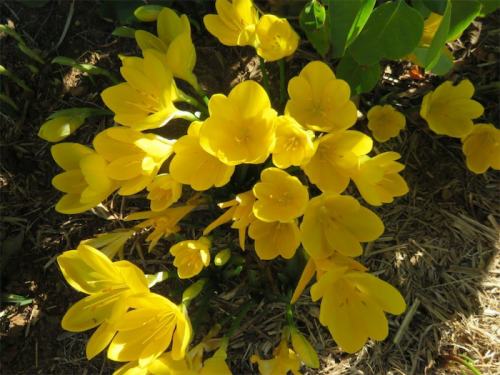
WITH spring bulbs flooding the garden centres for planting now, it’s easy to overlook the wide range of autumn-flowering bulbs. Autumn-flowering bulbs are just emerging and provide some lovely autumn colour and when they die down, it’s only a short time before the first of the spring bulbs appear, which gives a continuity of flowers.

While it’s rather late to plant these bulbs in the garden, it might be worth taking a chance and try them in pots.
One of my favourites is nerines. They make a great cut flower, which lasts at least a week to 10 days and its flowers have a delicious perfume.
Nerines are a genus of more than 30 species, all native to South Africa. The most popular variety is Nerine bowdenii with its profusion of spidery, rich-pink flowers.
Plant it with its neck above the soil in well-prepared, free-draining ground. Heavy soils can be made more friable with the addition of washed river sand, decayed manure and leaf mould. These should be thoroughly mixed in with the existing soil. Leaf mould can usually be found with leaves rotting down from last autumn under deciduous trees. Don’t use chemical fertilisers in the planting hole or around the top of the bulb at any time.
The flowers appear on long 40-60cm stalks, each with six-to-10 frilled, bright-pink flowers.
The harder-to-find, pure-white Nerine flexuosa “Alba” is appearing in our garden now. This is the only white-flowered nerine in cultivation.
The leaves usually start appearing quite a while before the flowers, which are of a similar size and abundance as N. bowdenii.
There are many other varieties often advertised in online nurseries such as Lambley Nursery of Victoria, well-known for the huge range of unusual plants. Look out for the rich-red variety.
After flowering has finished and the leaves have turned yellow and died down, the bulbs can be dug up in late autumn/early winter. The numerous small bulb offsets can be separated from the parent and planted out between late autumn and spring. These offsets should flower the following autumn.

# 0311
Another favourite bulb so popular in British gardens is the Autumn Crocus or, more correctly, Colchicum. I took the photo here recently at Cooma Cottage in Yass and imagine they go back to the time of Hamilton Hume. Once you have them in the garden, they’re there for the long haul!
Colchicum has about 60 species along with the crocus genus of about 80 species. Both range from Europe, North Africa, Turkey and Lebanon across to Afghanistan.
The two are often confused between the autumn and spring varieties. The flowers range from bright yellow to pure white, blue, purple and more.
The ever-so-expensive Crocus sativus or saffron crocus ranges from Italy to Kurdistan and is generally accepted to have been cultivated in Palestine since the time of King Solomon. The flowers are a lilac blue with the long, drooping stigma of brilliant orange-scarlet used in cooking.
AND on manures: they should never be used fresh and, ideally, are a great addition to the compost heap. Manures depend on what the animal has been fed. Unfortunately, horse manure may give a good crop of hay and sheep manure, with its little pebbles, often has a crop of stinging nettles and other weeds. Cow manure is the best going through the system several times as the animals chew the cud, with no weeds.
Jottings…
- When buying fruit trees, get advice from the garden centre whether two are needed for cross pollination. Peaches, apricots and nectarines are self-pollinating. Apples, pears and plums need two varieties.
- Berries of all sorts can be planted in winter, strawberries (ensure they are certified), raspberries, black and red currants etcetera will be arriving at garden centres in the next month.
Who can be trusted?
In a world of spin and confusion, there’s never been a more important time to support independent journalism in Canberra.
If you trust our work online and want to enforce the power of independent voices, I invite you to make a small contribution.
Every dollar of support is invested back into our journalism to help keep citynews.com.au strong and free.
Thank you,
Ian Meikle, editor




Leave a Reply